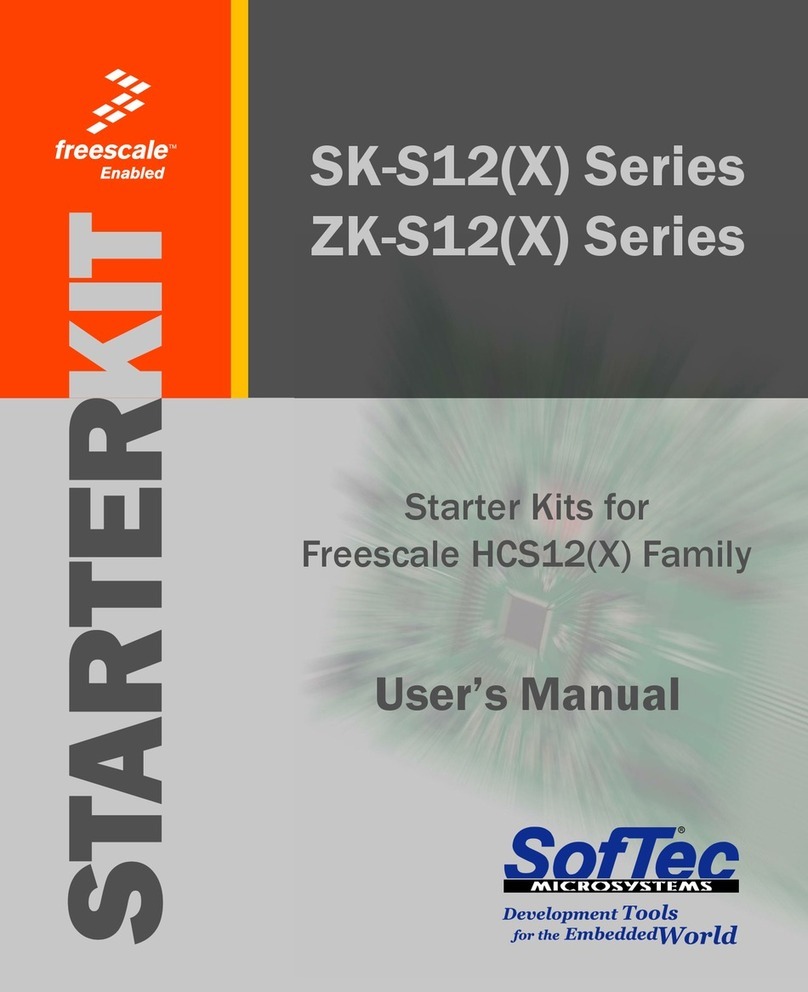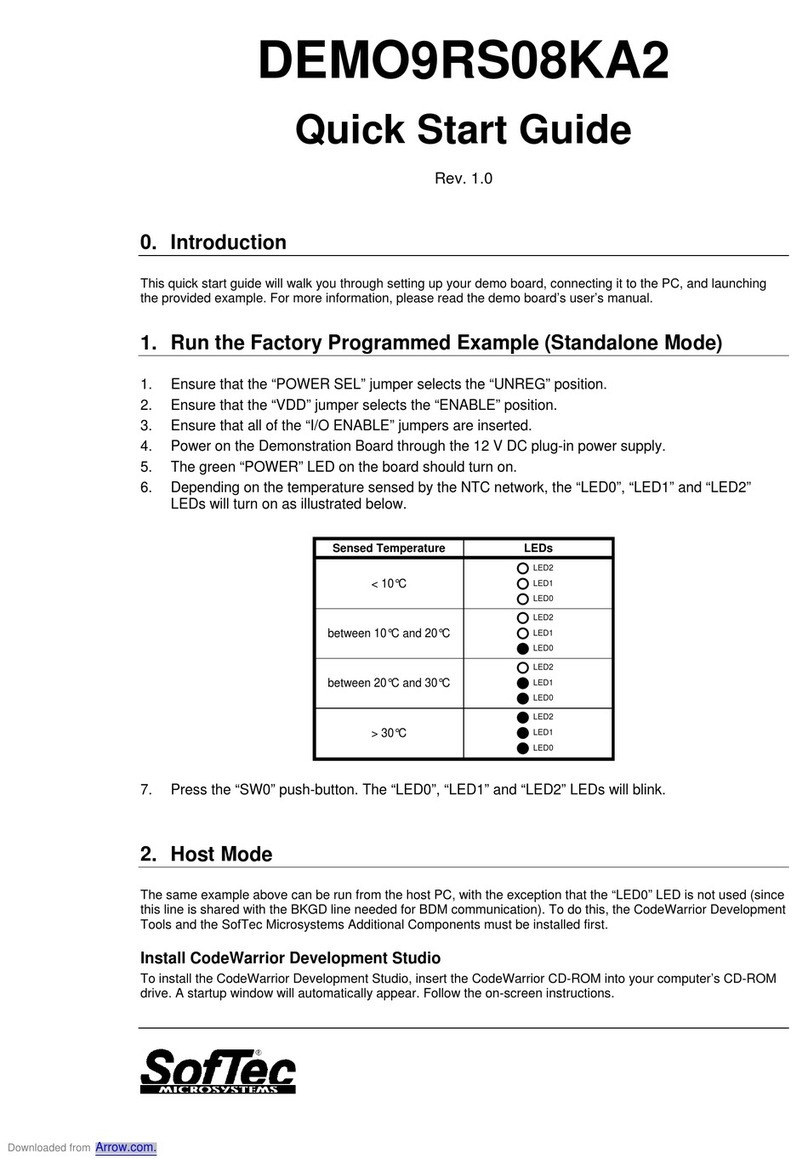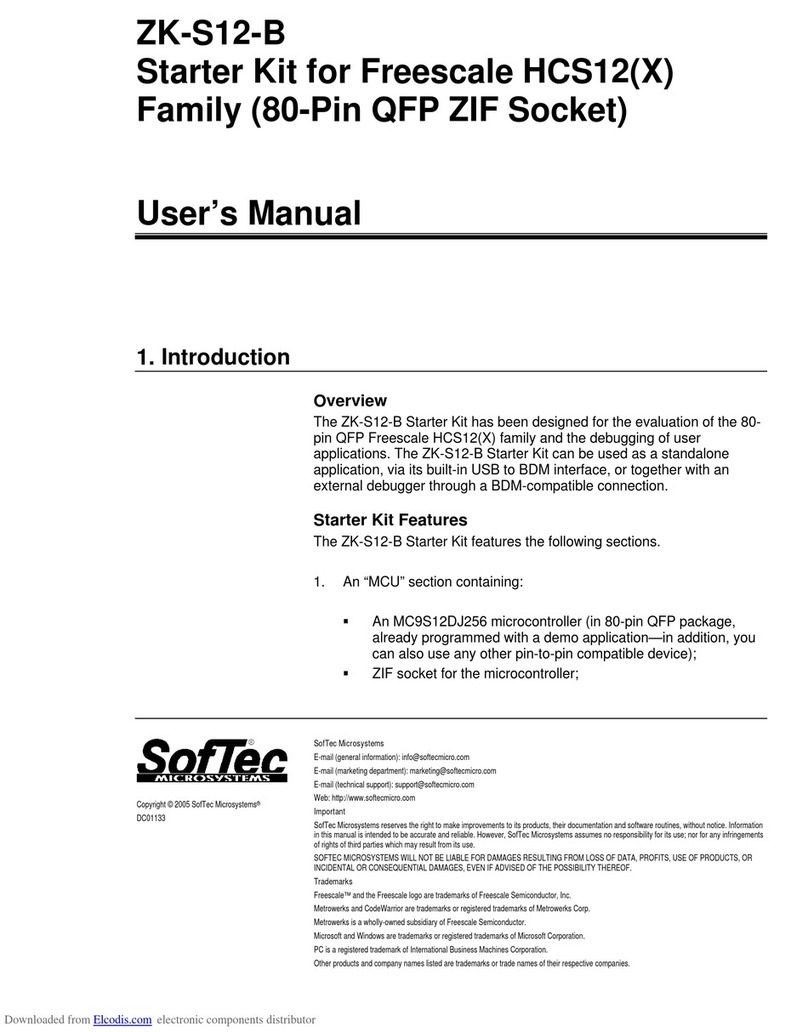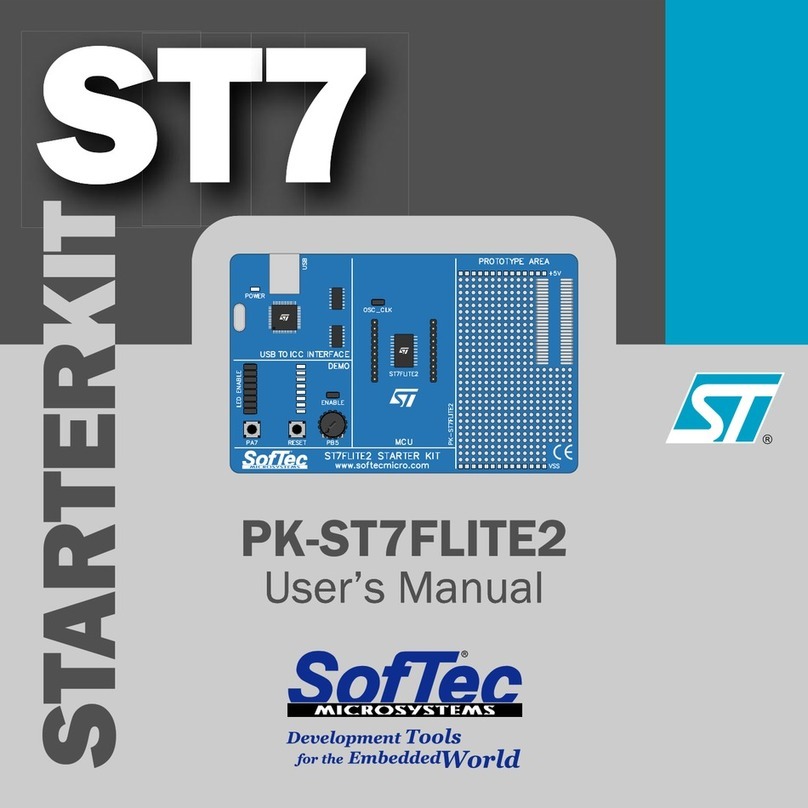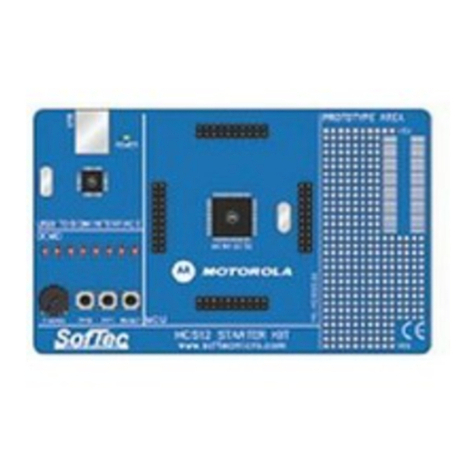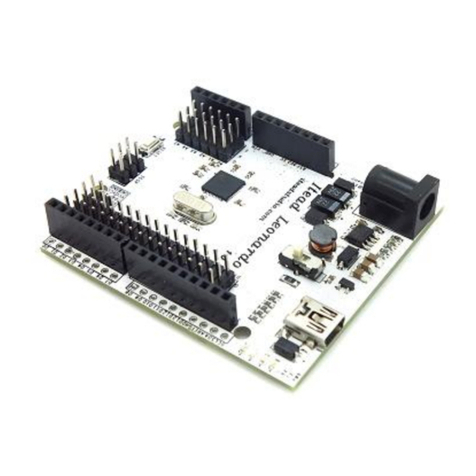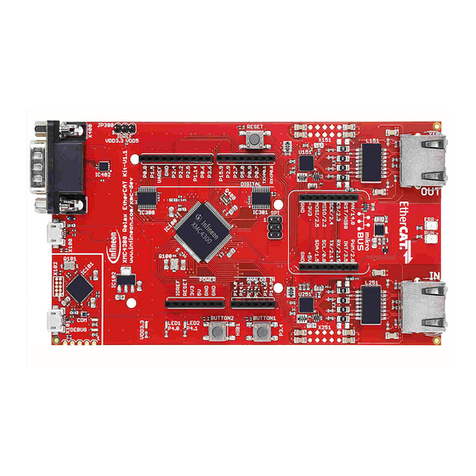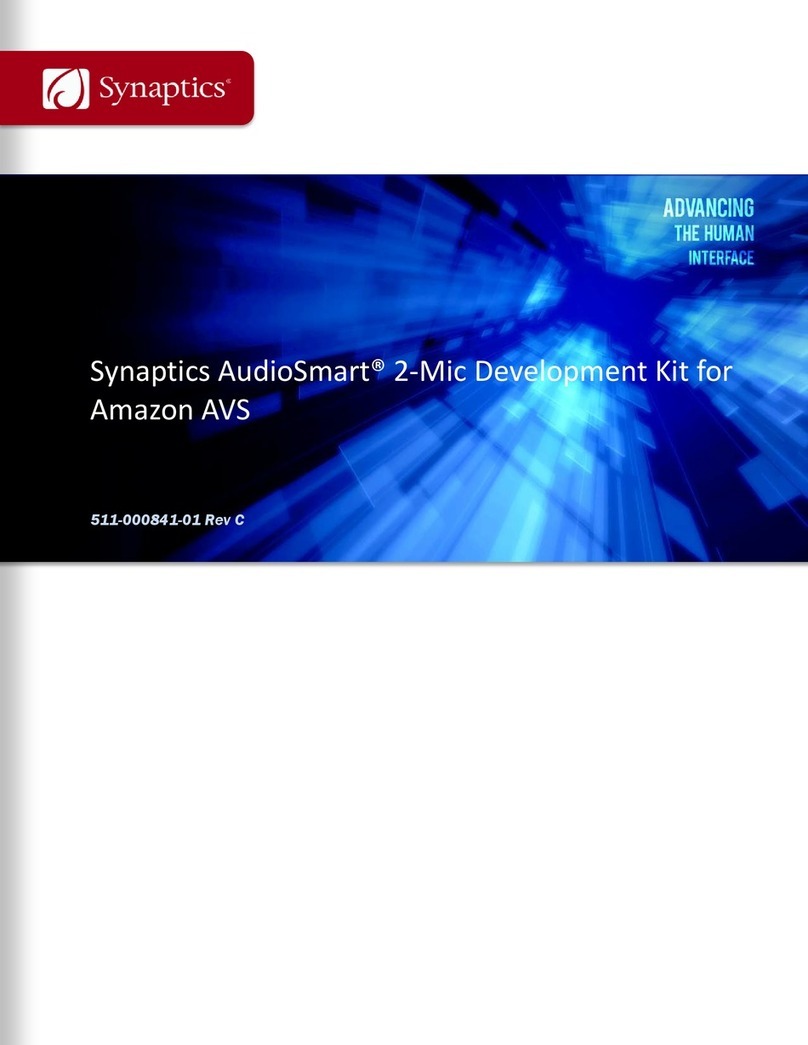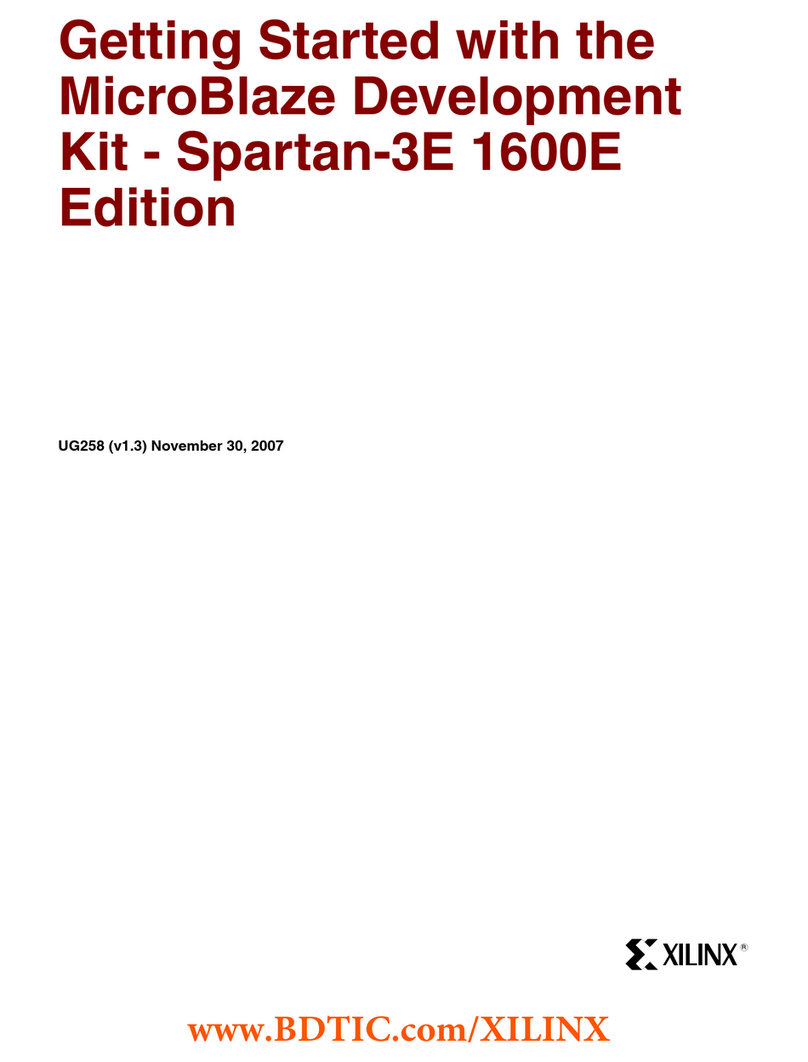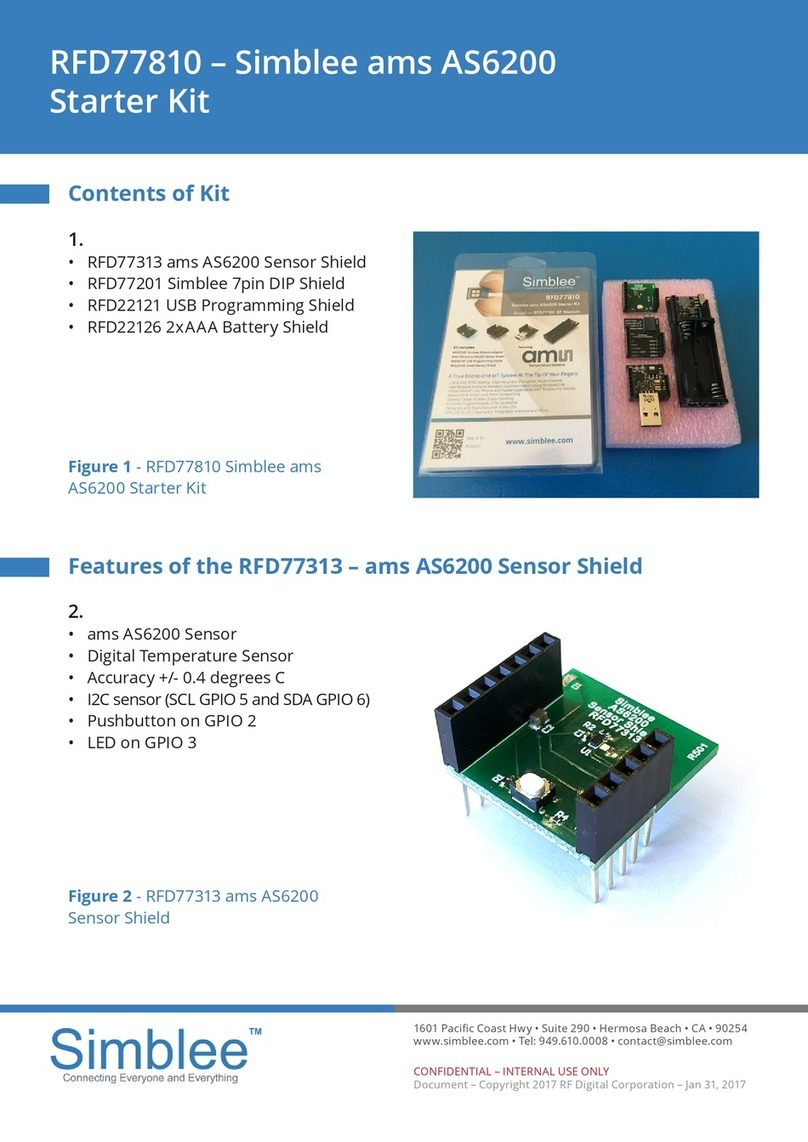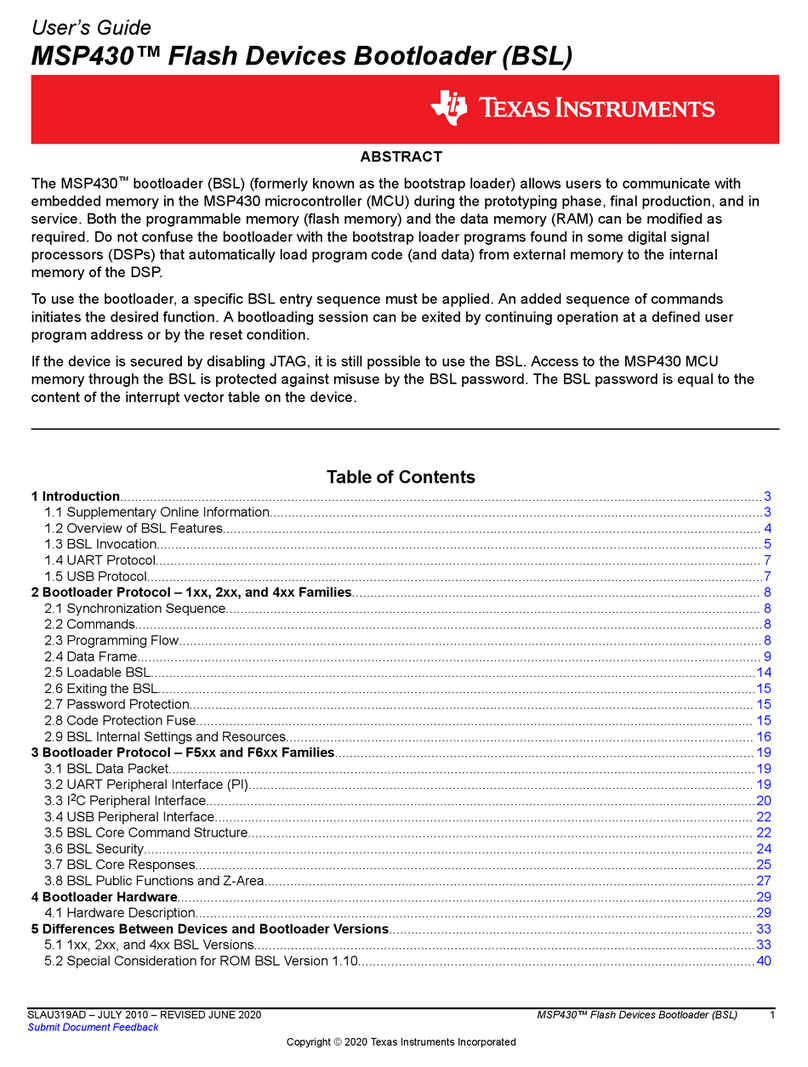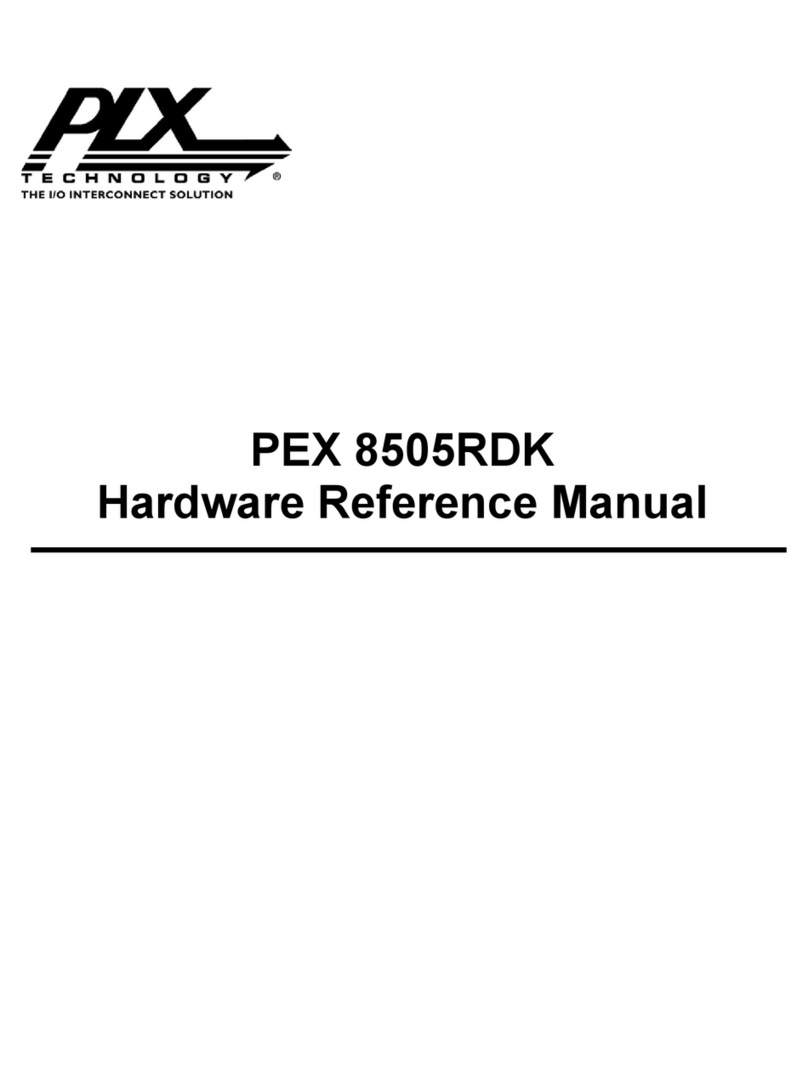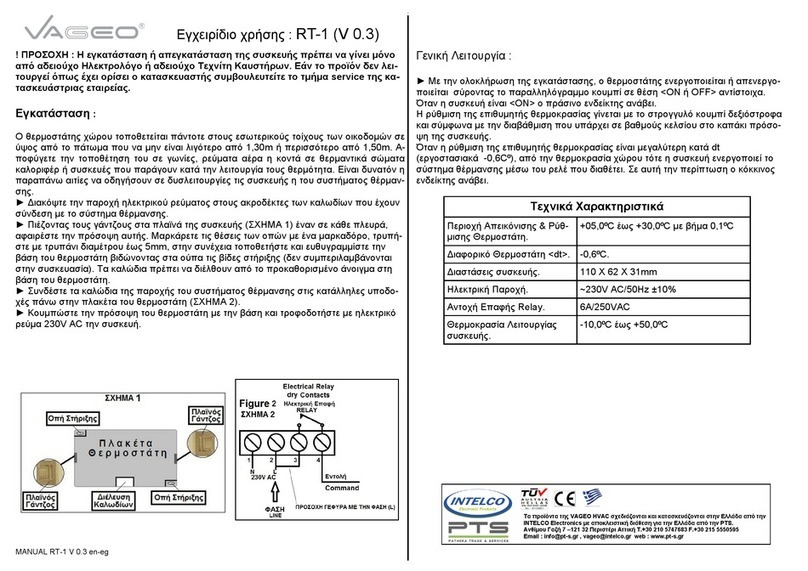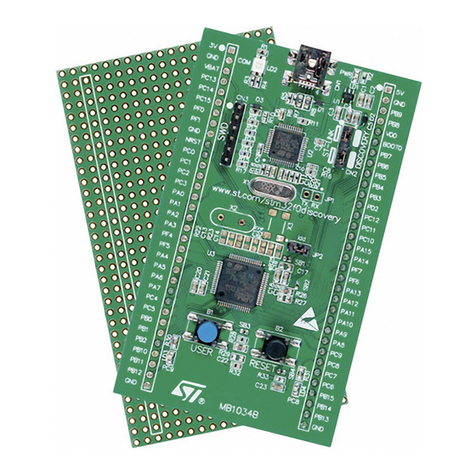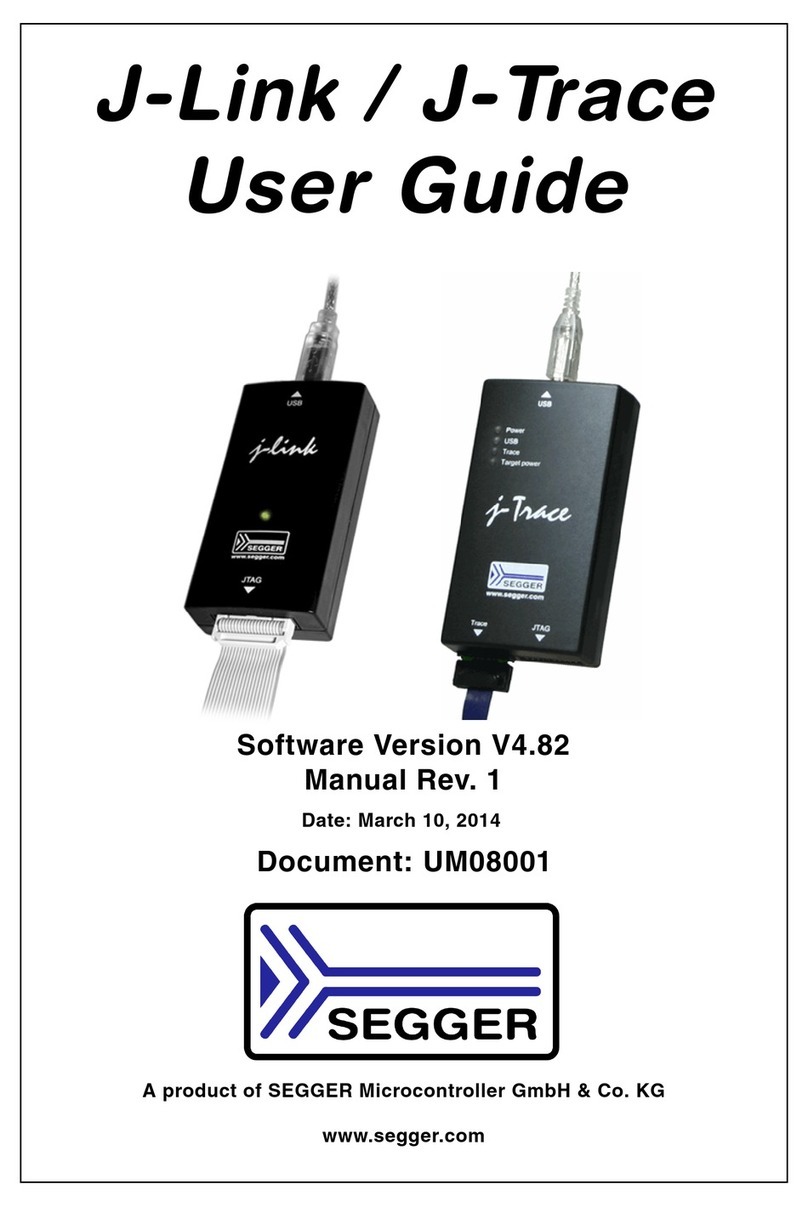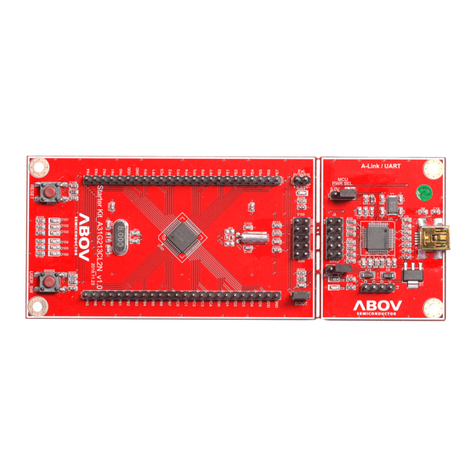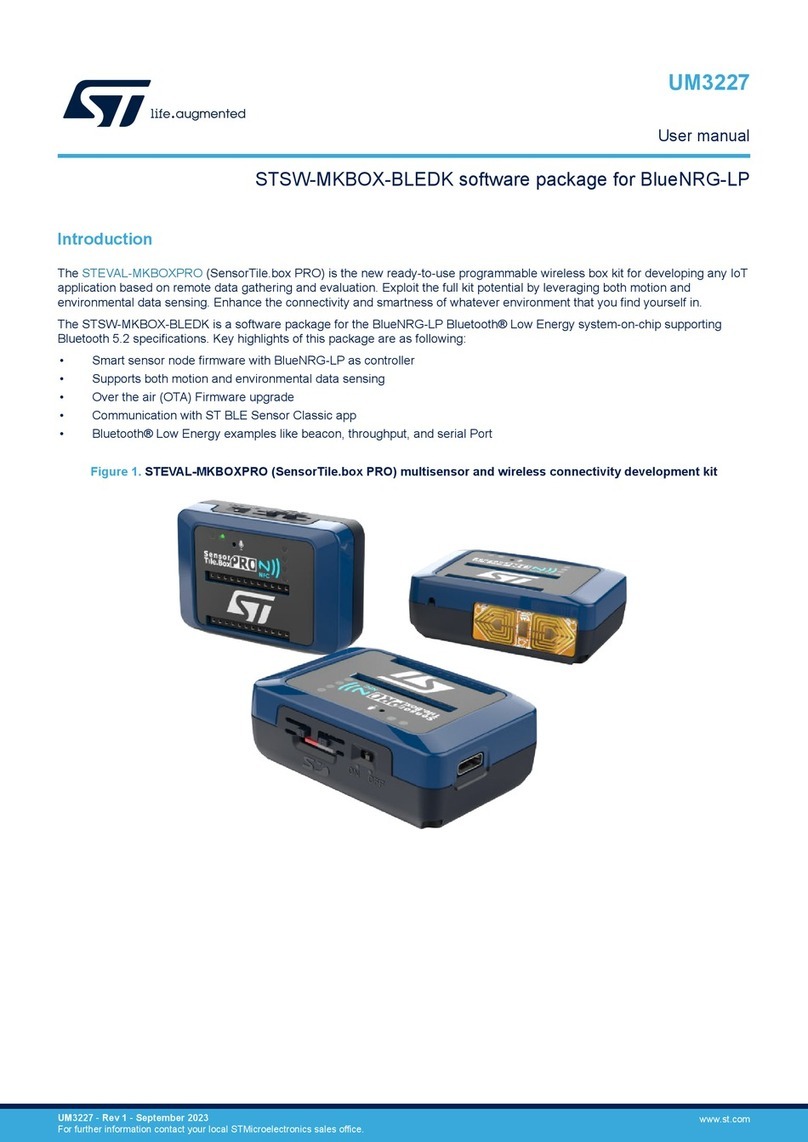ZK-HC08-AX-A User's Manual
Page 2
ZIF socket for the microcontroller;
A connector area to access the I/O pins of the microcontroller
for expansion prototyping;
Two clock sources: a provision for a clock module, and a 8 MHz
crystal, selectable via the “OSC SEL” jumper;
One jumper (“VREFH SEL”)which allow the high voltage
reference for the MCU internal A/D converter to be defined;
A connector (J105) with RST_IN# and RST_OUT# signals.
2. A “POWER SUPPLY” section which accepts a 12 V DC voltage
(used for the LIN and CAN transceivers) and provides a regulated
VDD voltage for the rest of the board. A circuitry (driven by the
“MON08 CONNECTORS” and “USB TO MON08 INTERFACE”
sections of the board) is present which allows the automatic power
on and off of the board for entering the “monitor mode”.
3. A built-in “USB TO MON08 INTERFACE” section which allows the
host PC to communicate with the microcontroller through a standard
USB interface. USB 2.0 is fully supported. When using an external
in-circuit debugger (via the “MON08” or “EMON08” connectors),
the “USB TO MON08 INTERFACE” circuitry must be bypassed by
removing all of the “ENA” jumpers in this area.
4. Two connectors for external in-circuit debugging/programming. Even
though the Starter Kits feature a built-in USB to MON08 interface,
two additional, separate MON08 connectors are present which allow
an external in-circuit debugger to be used. The “EMON08”
(Enhanced MON08) connector is used by in-circuit debugging tools
such the Freescale ICS system or the SofTec Microsystems
inDART-HC08; other tools, instead, use the “MON08” connector.
If you use an external in-circuit debugger/programmer, an additional
“VDD CTRL” connector allows you to control the Starter Kit’s VDD
voltage using the external tool’s power control. The output
impedance (both low and high) of the external tool driving the “VDD
CTRL” connector’s VDD_CTRL signal is not important.
5. A “RESET” section containing the push-button connected to the
MCU’s reset pin through a basic RC network.
6. An “INPUTS” section containing:
Four push-buttons, together with jumpers to connect/disconnect
them to/from the microcontroller’s PTH1, PTH0, PTG1 and
PTG0 lines;
Eight general-purpose DIP-switches, together with jumpers to
connect/disconnect them to/from the microcontroller’s PTE[7..4]
and PTF[3..0] lines;
A potentiometer, together with a jumper to connect/disconnect it
to/from the microcontroller’s PTB0/ATD0 pin.
7. An “OUTPUTS” section containing eight high-efficiency (low-current)
LEDs connected to port PTD, together with eight jumpers to
connect/disconnect each of the eight LEDs to/from their respective
port PTD pins.
8. A “RS-232” section providing one RS-232 channel connected to the
microcontroller’s SCI serial communication interface. The
microcontroller’s PTE0/TXD and PTE1/RXD lines used by the RS-
232 channel are shared with the LIN transceiver’s RX and TX lines.









